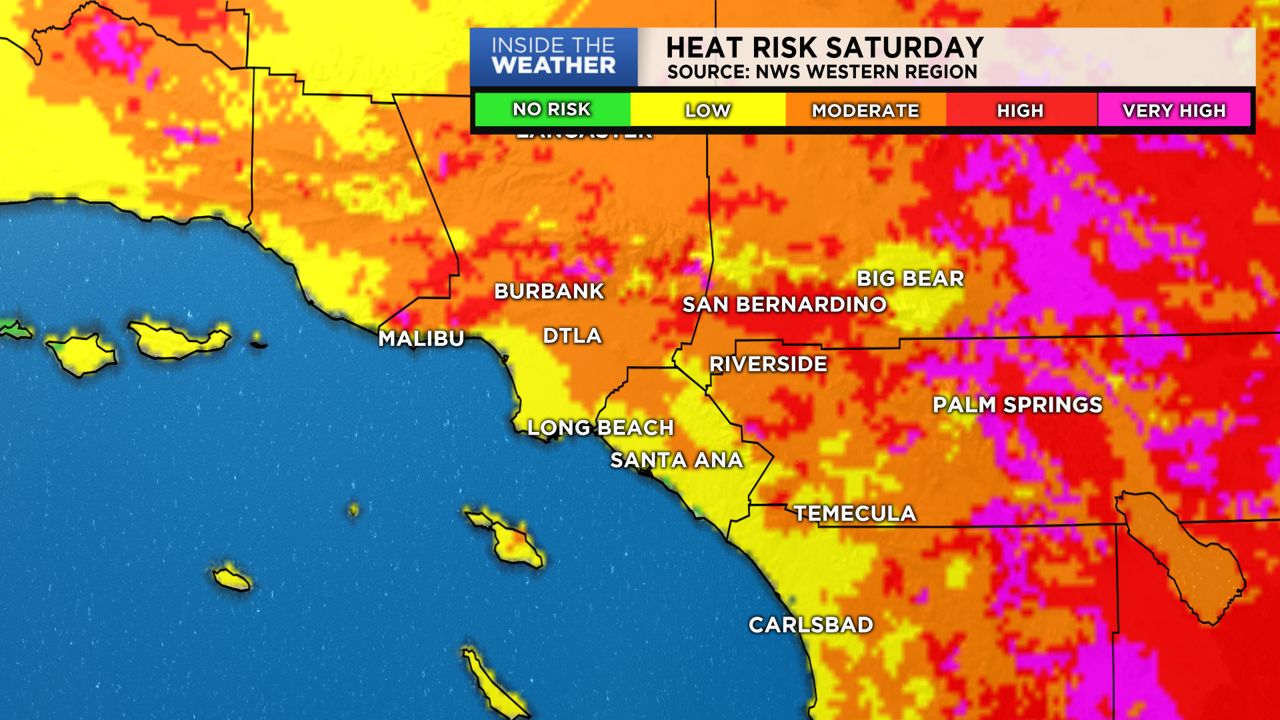Heat Advisory, Excessive Heat Warning, Red Flag Warning—all sorts of terminology is thrown around when the weather turns hot. We’ll walk you through what’s what and introduce a new product the National Weather Service is testing out to simplify the message on heat.
Generally, Heat Advisories and Excessive Heat Watches and Warnings are only issued a few days in advance when heat is expected to be exceptional. These products are what’s called “criteria based”—meaning reaching a certain threshold to trigger the warning.
Heat Advisory
- Issued within 12 hours of onset of heat
- Heat index temperatures of 100 degrees or greater
Excessive Heat Watch
- Issued between 24 to 72 hours of onset of heat
- Risk of heat wave is increased but some uncertainty in the forecast
- Moderate confidence (50 percent) excessive heat will occur
Excessive Heat Warning
- Issued within 12 hours of onset of heat
- Heat index temperature of 105 degrees or greater for at least two days
- Night time air temperatures do not drop below 75 degrees
- High confidence (80 percent or greater) excessive heat will occur
Excessive Heat Outlook
- Issued three to seven days in advance of possible excessive heat event
Whenever the weather turns hot and dry in Southern California, it raises fire concerns. Red Flag Warnings are often issued in conjunction with heat products.
Red Flag Warning (Los Angeles office criteria)
- Surface relative humidity less than 15 percent with sustained winds of 25 mph or frequent gusts over 35 mph
- Surface relative humidity less than 10 percent with sustained winds of 15 mph or frequent gusts over 25 mph
- Widespread and/or significant dry lightning
- Forecaster discretion
As if keeping the definitions and criteria straight weren’t enough, sometimes the National Weather Services issues these products outside the general criteria.
Other factors they consider include:
- The time of year
- Departure from average
- Humidity
- Fuel moisture
Criteria also varies from region to region with certain parts of the country using different criteria to evaluate heat risk. For example, humidity plays a large role in determining heat risk east of the Rockies.
“There’s some subjectivity to it,” Certified Consulting Meteorologist Jan Null says. “There’s always an element of forecaster discretion.”
In an effort to simplify the message on heat, the Western Region of the National Weather Service is trying out a heat risk product, a simple zero through four scale that uses a standardized approach to generate a consistent heat risk forecast across the country.

The criteria include:
- Maximum temperature
- Minimum temperature
- Daily climatological normal temperature (1981-2010)
- Modeled heat health thresholds
- Acclimation to heat
- Early season heat
- Extended duration of excessive heat
The heat risk generator takes all these criteria into account and compares that value with the local National Weather Service forecasted temperatures to determine heat risk for an entire 24-hour period.
The final product of expected heat risk is based on the following scale:
The heat risk forecast is updated twice daily and goes out seven days in the future.
The criteria that triggers Heat Advisories and Warnings can be confusing for the average citizen, especially since it varies so much from place to place.
The new heat risk forecast is a simplified, uniform approach to understanding and preparing for excessive heat—especially for those who may be impacted by heat below the threshold of National Weather Service advisories and warnings.
It is available in the Western Region of the United States, but any National Weather Service office can install the code and run it locally.
Try it out for yourself and see if heat risk takes on a new meaning!



